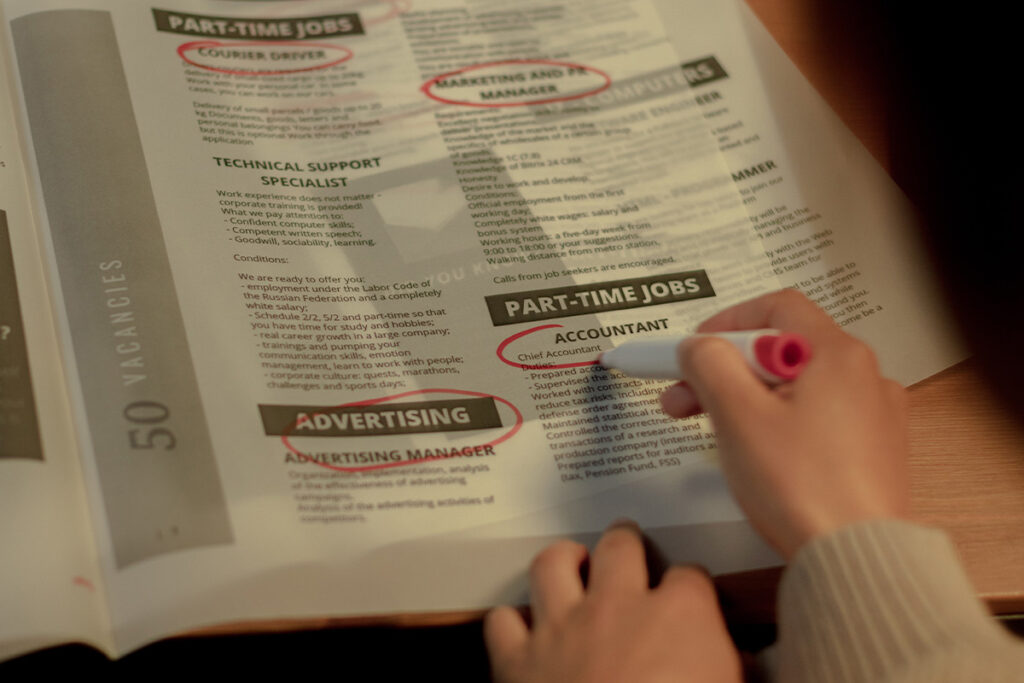
Are cutting-edge digital solutions are attractive to candidates? Do candidates want to see the money on the table before committing to a job? From August through October 2022, the Boston Consulting Group (BCG) and The Network, a global alliance of recruitment websites, undertook a survey dedicated to exploring job seekers’ recruitment preferences. In total, more than 90,000 people participated, making it the largest-ever study of its kind.
BCG and The Network had one simple aim: seeking the truth behind what job seekers actually want. “Part of the problem lies in the recruitment process”, the report states. “How employers and candidates connect, communicate, set expectations, and make decisions. Or how they don’t. Often, employers don’t know what policies and actions will attract potential employees—or deter them. Sometimes, they may even be uncertain about how to find and recruit them.”
1: Job seekers place experience before salary
The first myth debunked by job seekers revolves around the offer versus experience debate. According to the BCG and The Network report, 52% of respondents would refuse an otherwise attractive job offer if they had a negative experience during the recruitment process. In other words: roughly half of all job seekers places the experience before the prospective salary. Doubling down on that notion, a further 66% said that a timely, smooth process is the number one way for an employer to stand out during recruitment.
52% of respondents would refuse an otherwise attractive job offer if they had a negative experience during the recruitment process
2: The majority of job seekers just want good work-life balance
You’ve heard of the work to live rather than live to work approach. It is one of the first myths that isn’t necessarily debunked by the research. Instead, 69% of respondents say they ‘dream of a stable job with a good work-life balance’. It is by far the most popular response when respondents are asked to envision their ideal careers.
3: Candidates aren’t fine being interviewed by AI
While new tech is being born every day in an attempt to speed up and enhance the recruitment process, the research illustrates a less positive image on the side of job seekers. According to the survey, most respondents, even people in digital fields and members of younger generations, prefer in-person application and selection channels. 77% of job seekers don’t prefer a form of an AI-led automated interview.
Most respondents, even people in digital fields and members of younger generations, prefer in-person application and selection channels.
On the other hand, personal (face-to-face) interviews with future managers (57%) and personal interviews with recruiters (56%) are by far the highest scorers when job seekers were asked about their preferences along the recruitment journey. Online or phone interviews (49%) with future managers and recruiters (48%) also do relatively well. Asking candidates to prepare an intro video of themselves, meanwhile, seems very much counterproductive. A mere 20% prefers any type of homemade video selection method.
4: It is all about the money
No, we’re not re-debunking the first recruitment myth on the list — job seekers do want to see money on the table. Insufficient financial compensation is widely regarded as the number one dealbreaker among job seekers deicing whether to accept or refuse a job offer. Moreover, it may be wise to use 2023 as the year to integrate salary transparency on all job ads. According to the survey, information about salary range is the first thing respondents look for in a job ad.
5: Start following-up on offers
You’ve conducted three interviews and you’ve made up your mind. You’ve decided to extend an offer to a job seeker. Now all you can do is wait. Wrong. Among candidates, 59% expects some openness to negotiate conditions after receiving an offer. Moreover, more than 45% say they appreciate further outreach from their prospective employer to be able to help them make a decision.
6: Most job seekers want a traditional 5-day work-week
While many companies are potentially currently operating on the idea that traditional jobs are no longer the way to attract job seekers — the survey completely debunks that notion. For the majority of job seekers, part-time gigs, side-projects or freelancing isn’t their preferred way to work. In all, the research found that 75% of job seekers still want a traditional five-day workweek. As far as their preferred work location goes, a hybrid model seems to be the most popular choice. 54% look for a hybrid model, wherein they work a few days at home, and a few days at the office. 35% prefers a fully on-side model, while 11% prefers a fully remote model.
The research found that 75% of job seekers still want a traditional five-day workweek.
7: The company website is still the way to go
Whether candidates are looking for jobs or actively seeking more information on a prospective employer after a job listing caught their attention, company websites are still the way to go. 65% of job seekers uses company websites when looking for a job. And when they want to amass more information, 65% of job seekers uses the company website to find out more about the job that caught their interest. Funnily enough, only 13% said they found their job directly through a company website.
8: Friend recommendations trump recruiter outreach
To catch the interest of passive job seekers, a company needs to make a strong impression. This usually has to come through someone they know — a recommendation from a friend (50%) or someone from their personal network (44%) are the most popular ways of catching a passive job seeker’s attention. Cold outreach from a recruiter (38%) doesn’t score too bad either.
Six key actions to maximise attractiveness
BCG and The Network see six key effective steps with which employers can maximise their attractiveness to desirable job candidates.
- Divide your strategy to target various target personas. Consider job seekers as customers and tailor your recruiting strategy to fit their different needs — and adjust the approach accordingly.
- Revamp your recruitment process to create a personal experience. Our research indicates that the impression job applicants have during the hiring process can heavily impact their decisions. However, many companies continue to treat recruitment as a corporate process that prioritises administrative requirements and outdated systems rather than crafting an appealing and convincing experience for potential employees.
- Expand your talent pool by overcoming biases. The larger the pool of potential candidates, the more likely you are to find the right fit. To expand your pool, you can consider more than just traditional hiring requirements. Instead, you can focus on skills, motivations, and potential rather than degrees or years of experience.
- Leverage digital tools to your advantage, but use them selectively. This doesn’t mean that companies should abandon physical processes. Digital tools can help with behind-the-scenes HR tasks such as applicant tracking or AI-aided resume screening. They can also improve certain candidate-facing aspects of the process such as automatic interview updates or app-based preparation tips. In some cases, an efficiency gain may come at the expense of candidate satisfaction, but digital tools can aid in meeting prospective employees’ expectations for prompt responses, clear communication, and well-defined timing.
- Establish a strong culture foundation. While a higher salary or seniority may attract candidates, they also seek work-life balance and flexibility in the long run. Offering hybrid work models, flexible hours, and family support services can satisfy these needs and attract candidates.
- Re-recruit your current employees. Often, people seek new jobs to further their careers and opportunities. If their current employer offers these things, they may consider staying. In a competitive talent market, retaining current talent is crucial. Employers should maximise their existing talent’s potential and consider former employees and freelancers.







